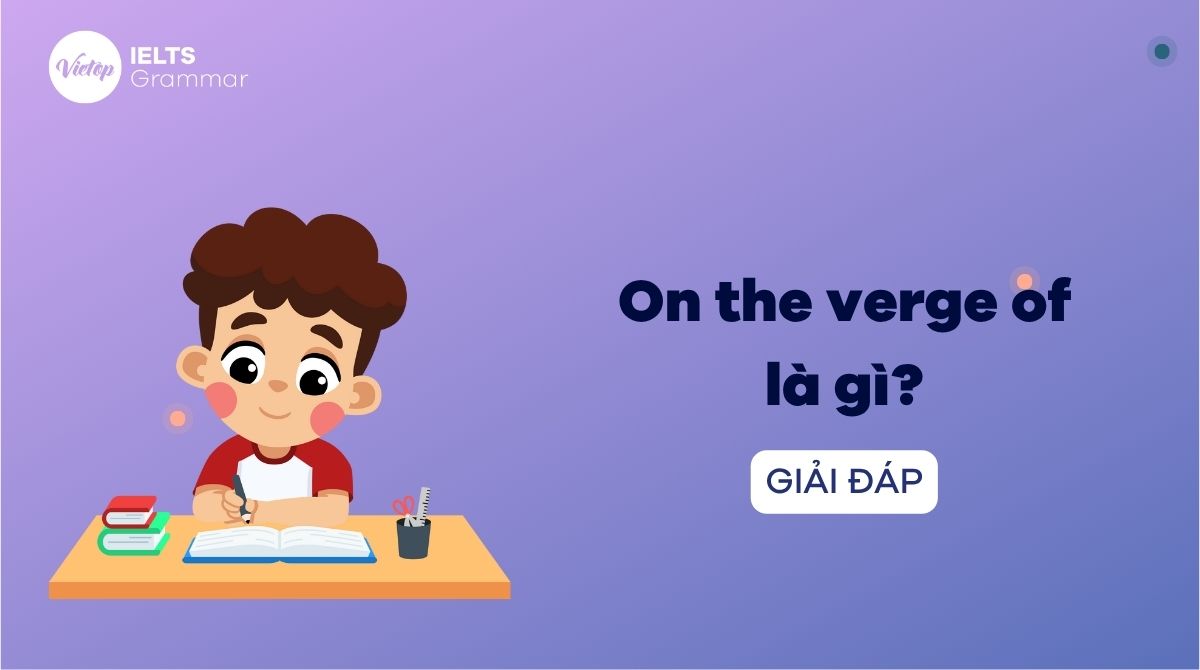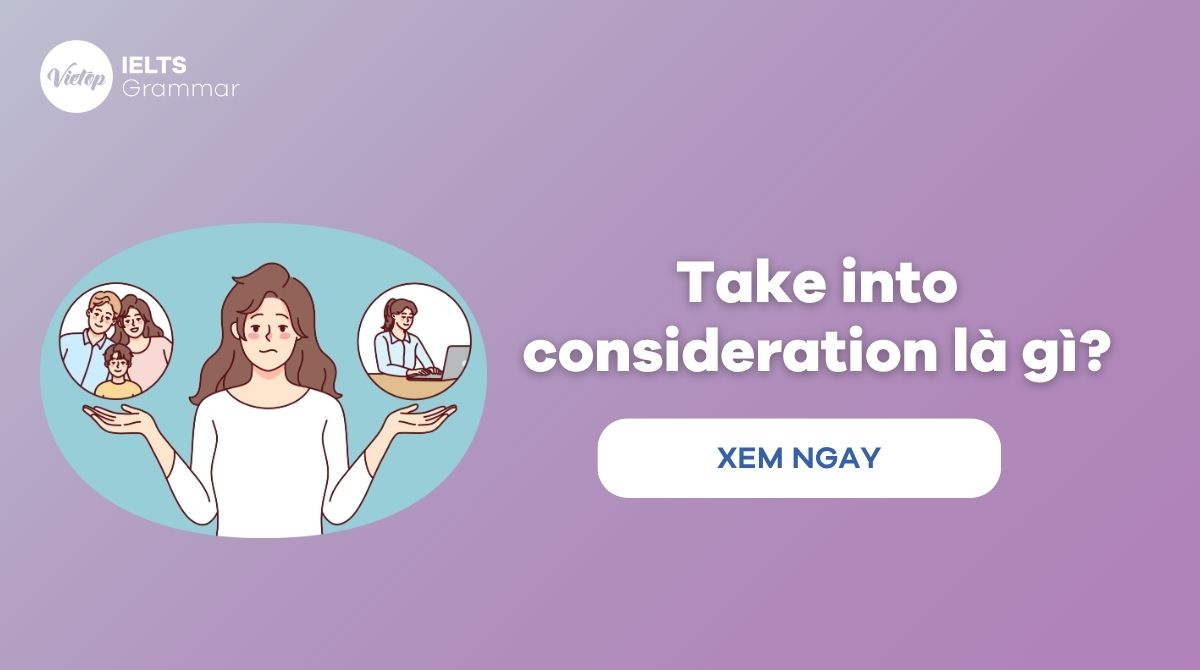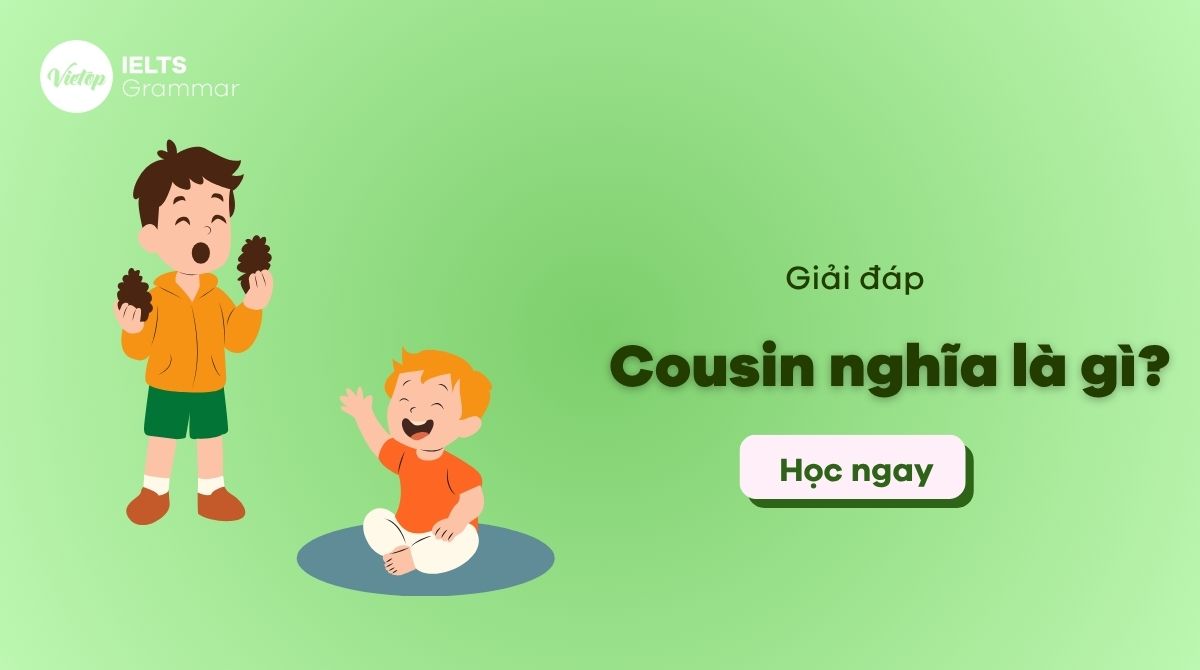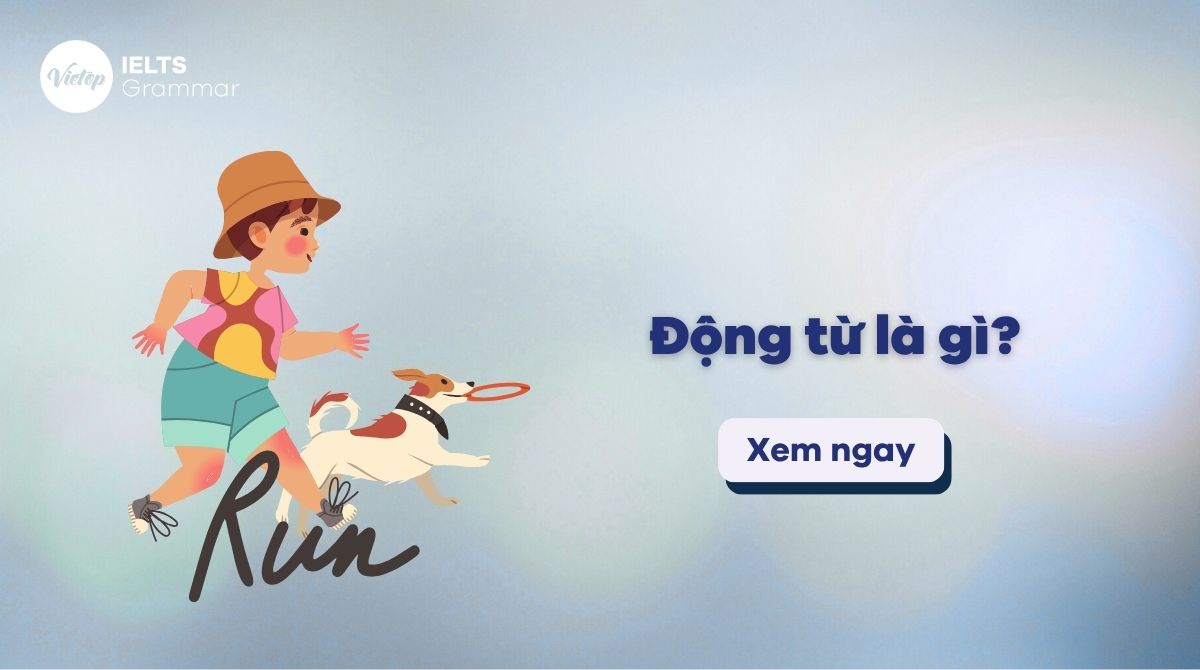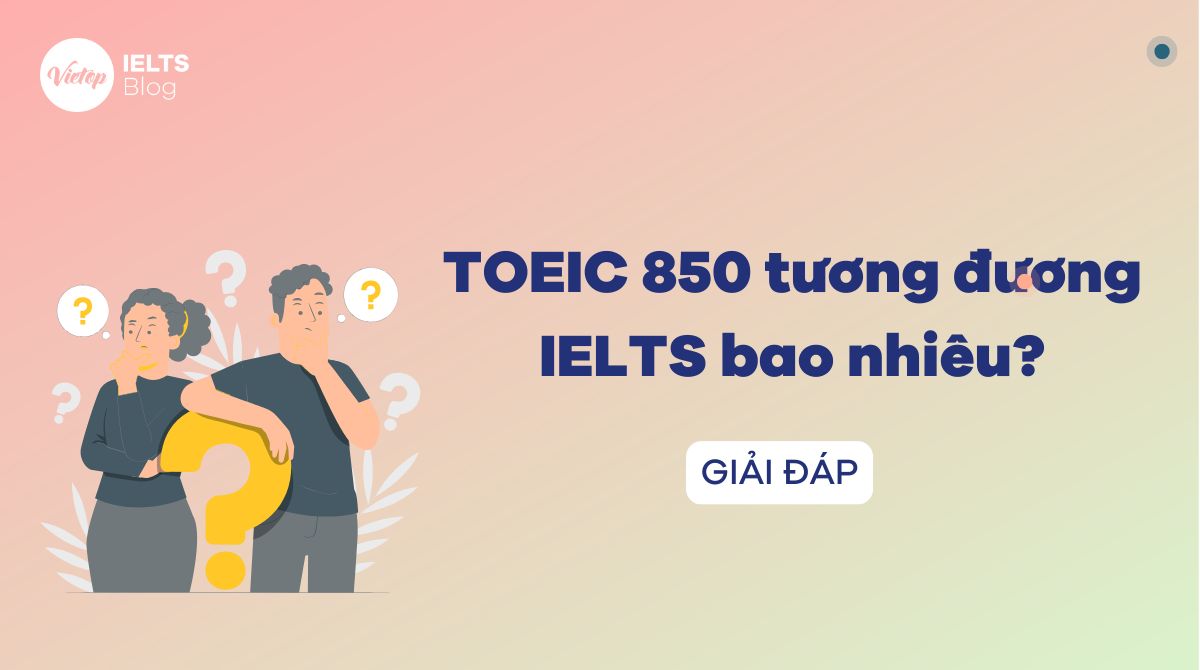Câu tường thuật (Reported Speech) là một trong những trường điểm ngữ pháp cần thiết và quan trọng để đạt điểm cao trong các bài thi IELTS và cải thiện kỹ năng. Câu tường thuật giúp cho các bạn khi giao tiếp sẽ tường thuật lại câu nói của ai đó gọn gàng, dễ dàng hơn và còn có thể gây ấn tượng với các giám khảo trong kỹ năng IELTS Speaking.
Hiểu được điều đó, trong bài viết ngày hôm nay, hãy cùng Vietop English tìm hiểu sâu hơn về định nghĩa, cách dùng và cách chuyển đổi câu tường thuật tiếng Anh nhé!
1. Câu tường thuật là gì?
Câu tường thuật (Reported Speech), hay còn gọi là câu gián tiếp, là câu được dùng khi ta muốn thuật lại hoặc kể lại một lời nói gián tiếp.
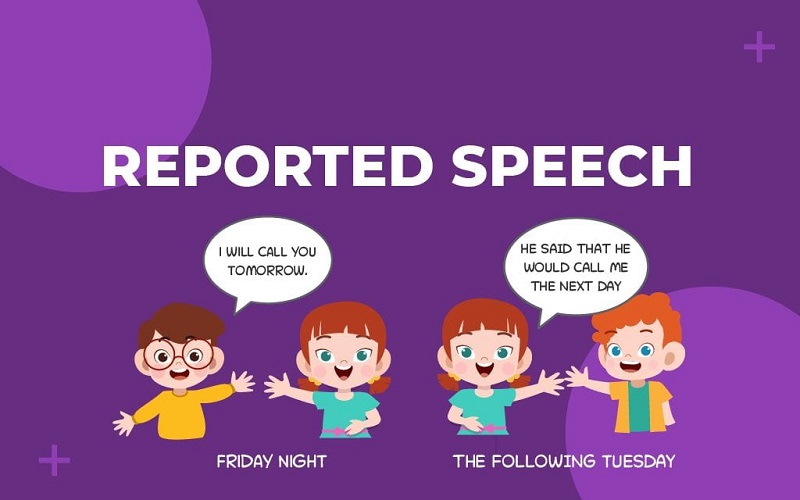
Thông thường, khi giao tiếp, chúng ta có hai dạng câu tường thuật:
- Câu tường thuật trực tiếp (Direct Speech): trích nguyên câu của người nói và đặt nó trong dấu hỏi chấm.
E.g: Lisa said: “I want to go to the cinema with my boyfriend.” (Lisa nói: “Tôi muốn đi xem phim với bạn trai của tôi.”)
- Câu tường thuật gián tiếp (Indirect Speech): thuật lại câu của người nói theo một cách gián tiếp, không trích dẫn y nguyên nên không cần đặt trong dấu ngoặc kép.
E.g: Lisa said that she wanted to go to the cinema with her boyfriend. (Lisa nói rằng cô ấy muốn đi xem phim với bạn trai của cô ấy.)
2. Các bước chuyển đổi từ câu trực tiếp sang câu gián tiếp
Ở câu gián tiếp, các thì tiếng Anh, thứ tự từ, đại từ nhân xưng và các từ chỉ thời gian có thể sẽ bị thay đổi so với câu trực tiếp.
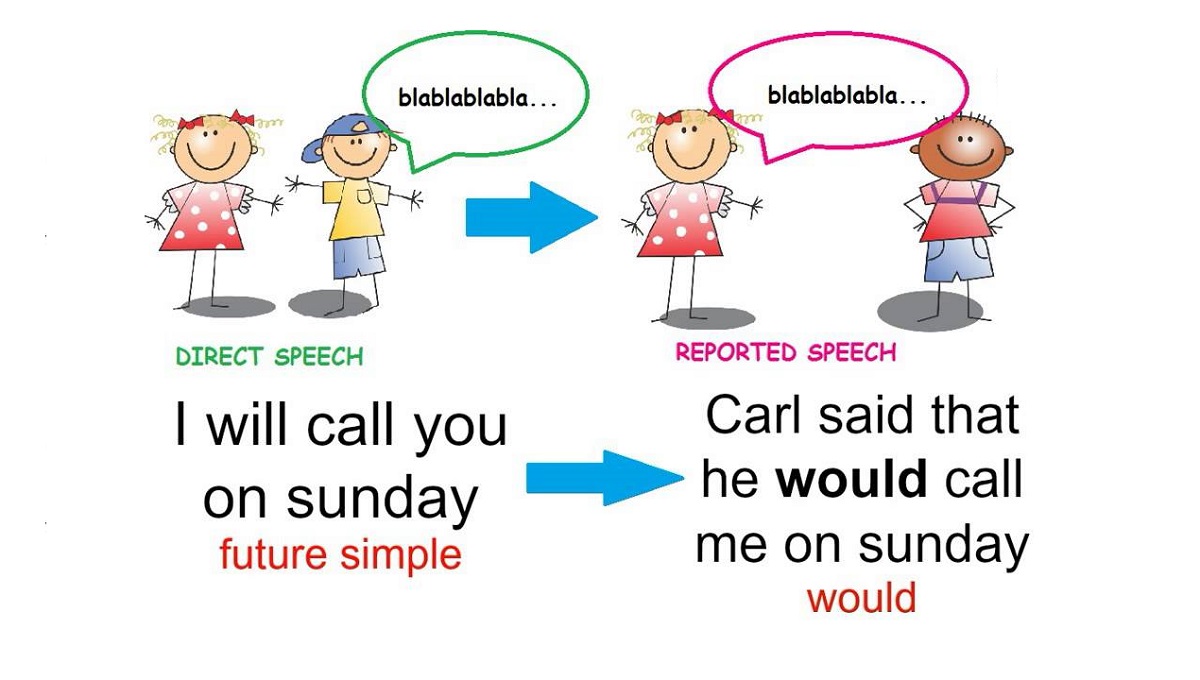
Bước 1: Chọn động từ tường thuật và “lùi thì” động từ nếu cần
Các động từ tường thuật thường gặp:
- Say (Said): nói + THAT
- Tell (Told): nói với ai + SOMEBODY THAT
- Ask (Asked): yêu cầu
- Deny (Denied): phủ nhận
- Promise (Promised): hứa
- Suggest (Suggested): đề xuất
- Discuss (Discussed): bàn luận
Động từ tường thuật ở thì hiện tại
Nếu động từ tường thuật được chia ở các thì hiện tại thì chúng ta giữ nguyên thì của động từ trong câu cần tường thuật, cũng như đại từ chỉ nơi chốn và trạng từ chỉ thời gian.
E.g:
- She says: “I have a car.”
-> She says that she has a car. (Cô ấy nói cô ấy có một chiếc xe.)
Động từ tường thuật ở thì quá khứ
Nếu động từ tường thuật ở dạng thì quá khứ, bạn cần lùi thì trong câu tường thuật xuống một thì.
| Câu trực tiếp | Câu gián tiếp |
| Hiện tại đơn He said: “I like playing football.” | Quá khứ đơn He said he liked playing football. |
| Hiện tại tiếp diễn They said: “We are playing games.” | Quá khứ tiếp diễn They said they were playing games. |
| Hiện tại hoàn thành She said: “I have run 2 kilometers.” | Quá khứ hoàn thành She said she had run 2 kilometers. |
| Hiện tại hoàn thành tiếp diễn They said: “We have been waiting here for 2 hours.” | Quá khứ hoàn thành tiếp diễn They said they had been waiting there for 2 hours. |
| Quá khứ đơn She said: “I ate dinner.” | Quá khứ hoàn thành She said she had eaten dinner. |
| Quá khứ tiếp diễn They said: “It was raining.” | Quá khứ hoàn thành tiếp diễn They said it had been raining. |
| Quá khứ hoàn thành He said: “I had finished all the homework.” | Giữ nguyên He said he had finished all the homework. |
| Quá khứ hoàn thành tiếp diễn She said: “I had been living there for 10 years.” | Giữ nguyên She said she had been living there for 10 years. |
| Tương lai đơn They said: “We will work together.” | Tương lai đơn trong quá khứ They said they would work together. |
| Tương lai hoàn thành He said: “I will have worked hard.” | Tương lai hoàn thành trong quá khứ He said he would have worked hard. |
| Tương lai hoàn thành tiếp diễn She said: “I will have been working here for 3 years.” | Tương lai hoàn thành tiếp diễn trong quá khứ She said she would have been working there for 3 years. |
| Tương lai tiếp diễn They said: “It will be working.” | Tương lai tiếp diễn trong quá khứ They said it would be working. |
Đối với trợ động từ, động từ khuyết thiếu
Lưu ý: Một số động từ khuyết thuyết không thay đổi khi chuyển sang câu gián tiếp: would, could, might, should, ought to, must (có vẻ).
Bước 2: Đổi các đại từ và tính từ sở hữu
Bảng quy đổi đại từ:
| Câu trực tiếp | Câu gián tiếp |
| I | He/She |
| We | They |
| You (số ít) | He/She/I |
| You (số nhiều) | They |
| Me | Him/Her |
| Us | Them |
| You (số ít) | Him/Her/Me |
| You (số nhiều) | Them |
| myself | himself/herself |
| Ourselves | Themselves |
| Yourself (số ít) | Himself/Herself/Myself |
| Yourself (số nhiều) | Themselves |
Bảng quy đổi tính từ sở hữu:
| Câu trực tiếp | Câu gián tiếp |
| my | his/her |
| our | their |
| your (số ít) | his/her/my |
| your (số nhiều) | their |
| mine | his/hers |
| ours | theirs |
| yours (số ít) | his/hers/mine |
| yours (số nhiều) | theirs |
Bước 3: Đổi các từ chỉ nơi chốn và thời gian
Bảng quy đổi thời gian và nơi chốn:
| Câu trực tiếp | Câu gián tiếp |
| here | there |
| this | that |
| these | those |
| now | then |
| today | that day |
| tonight | that night |
| yesterday | the previous daythe day before |
| tomorrow | the following daythe next day |
| ago | before |
| last (week) | the previous (week)the (week) before |
| next (week) | the following (week)the next (week) |
E.g:
- She said: “I want to see this movie with my boyfriend tomorrow.”
- -> She said that she wanted to see that movie with her boyfriend the following day. (Cô ấy nói cô ấy muốn xem bộ phim ấy với bạn trai cô ấy vào ngày tới.)
3. Các dạng câu tường thuật thường gặp
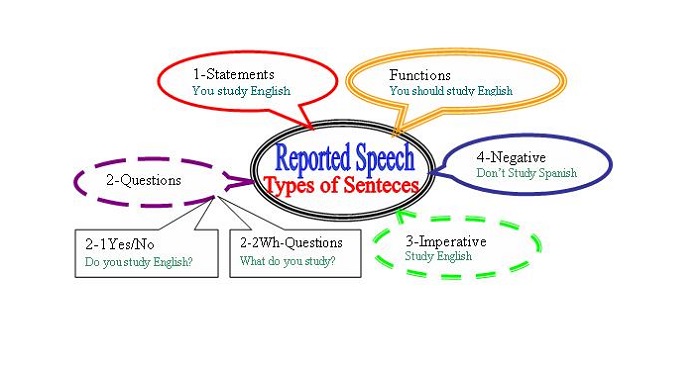
3.1. Câu tường thuật dạng kể
| S + say(s)/ said + (that) + S +V.S + tell(s)/told to + O + (that) + S + V. |
Trong đó: say(s)/ said to + Object (tân ngữ) → tell(s)/ told to + Object
E.g:
- “I like playing football,” he said to me.
-> He said to me that he liked playing football. (Anh ấy nói với tôi rằng anh ấy thích chơi bóng đá.) - He said to me: “Tim was in the hospital”.
→ He said to me (that) Tim had been in the hospital.
3.2. Câu tường thuật dạng câu hỏi
| S + asked/wonder/wanted to know + if/whether + S + V |
E.g:
- “Do you want to go to the party with me?” Peter asked me.
-> Peter asked me if/whether I wanted to go to the party with him. (Peter hỏi tôi liệu tôi có muốn đi đến bữa tiệc với anh ấy không.) - “Do you miss me?” He asked me.
→ He asked me if/whether I missed him.
| Cấu trúc | S + asked/wonder/wanted to know + -wh + S + V. |
| Từ hỏi | what, when, where, which, who, how,… |
E.g:
- “When will you come back home?” My mother asked.
-> My mother asked when I would come back home. (Mẹ tôi hỏi khi nào tôi sẽ trở về nhà.) - They asked us: “Where do you live?”
→ They asked us where we lived.
Lưu ý: Nếu động từ trong câu trực tiếp là say(s)/ said to+ Object thì phải chuyển về ask(s)/ asked + Object.
E.g:
- He said to me: “What color do you like?”
-> He asked me what color I liked. (Anh ấy hỏi tôi thích màu nào.) - He said to me: “Did you see the film”
→ He asked me if/whether I had seen the film. - They asked me: “What do you play?”
→ They asked me what I played.
3.3. Câu tường thuật dạng yêu cầu ai đó làm gì một cách lịch sự
| S + asked + O + (not) to – V (nguyên thể) |
E.g:
- “Could you close the door, please?”
-> She asked me to close the door. (Cô ấy nhờ tôi đóng cửa lại.) - “Please don’t smoke”.
→ She asked me not to smoke.
3.4. Câu tường thuật dạng mệnh lệnh
Khi chuyển đổi câu mệnh lệnh sang câu tường thuật mệnh lệnh, sẽ dùng công thức dưới đây.
| S + told + O + (not) to – V (nguyên thể) |
Ngoài ra, ta có thể sử dụng các động từ như: tell, ask, order,…
E.g:
- “Turn off the TV!” My father said.
-> My father told me to turn off the TV. (Cha tôi bảo tôi tắt TV đi.) - “Open the door!”
→ He told me to open the door - “Don’t turn on the light!”
→ She told me not to turn on the light.
Cấu trúc câu tường thuật là chủ điểm ngữ pháp giúp bạn đạt được điểm cao trong các kỳ thi tiếng Anh, đặc biệt là IELTS vì thế bạn không chỉ cần hiểu mà còn phải nắm thật chắc. Vì thế sau phần lý thuyết thì hãy cùng làm bài tập vận dụng dưới đây. Và nếu bạn đang có nhu cầu học IELTS thì hãy tham khảo khóa học Luyện thi IELTS cấp tốc hoặc liên hệ để được tư vấn rõ hơn nhé.
Xem thêm: Bảng chữ cái tiếng Anh
4. Các câu tường thuật đặc biệt
Một số trường hợp câu tường thuật khác đặc biệt sau đây:
S + promised + to V
Eg:
- Shally promised to pay back the money she borrowed. Shally hứa sẽ trả lại tiền mà cô ấy đã mượn.
- Tom promised to quit racing. Anh ấy hứa sẽ bỏ đua xe.
S + agree + to V
Eg:
- She agrees to leave the house the next week. Cô ấy đồng ý ra khỏi nhà vào tuần tới.
- He agrees to go to the new year party. Anh ấy đồng ý đến dự buổi tiệc năm mới.
S + accuse + sb + of + Ving
Eg:
- They accused him of killing people. Họ buộc tội anh ta vì tội giết người.
- She accused him of stealing. Cô ta buộc tội anh ấy vì tội ăn cắp.
5. Bài tập câu tường thuật (Reported Speech)
Task 1: Fill in the blank with the right form of verbs
- “I work in the cinema.” -> She said she _____ in the cinema.
- “I am cooking now.” -> She said she _____ then.
- “I’ve been running for 2 hours.” -> He said he _____ for 2 hours.
- “I visited my aunt all morning.” -> She said she _____ her aunt all morning.
- “I’ll lend you a pen.” -> He said he _____ me a pen.
- “I can’t say this.” -> She said she _____ that.
- “The meeting may start early.” -> He told us that the meeting _____ early.
- “You should take a rest.” -> They told me that I _____ a rest.
- “I must leave early today.” -> She said she _____ early that day.
- “Don’t talk so loudly!” -> They told me _____ so loudly.
Task 2: Make reported speeches. Start all your answers with ‘she’, and use the past simple of ‘ask’, ‘say’ or ‘tell’
- “Don’t do it!”
- “I got married last year.”
- “Be quick!”
- “Could you explain this question, please?”
- “Where do you live?”
- “Do you like studying Japanese?”
- “Study hard!”
- “How often do you do exercises?”
Task 3: Complete the sentences in reported speech
- Tommy said, “I love this city.”
-> Tommy said _______________________________________.
- “Where have you been?” he asked me.
-> He wanted to know _______________________________________.
- “Are you tired?” He asked me.
-> He asked me _______________________________________.
- “I always do morning exercises,” he said.
-> He said that _______________________________________.
- “You should drink more water,” he said.
-> He told me that _______________________________________.
- “Don’t waste your money,” she said.
-> She told me _______________________________________.
- “Be nice to your sister,” he said.
-> He asked me _______________________________________.
- “I can’t swim,” he said.
-> He said that _______________________________________.
Task 4: Finish those answers in reported speech
- Did your parents choose your name(s)?
Yes, my parents selected my name. When I was born, my parents wanted me to have a great name. (My mom said “Your dad bought a baby-name-book even before you were born”.)
- Do you think it’s important for young people to have good role models?
It’s essential, in my opinion. Without strong role models, young people have no opportunity to learn what is right or wrong. I think family, teachers or older friends can act as role models for young people. (One of my teachers told me “You have excellent writing skills and you should focus more on it”); It was the best advice I ever got!
- What qualities should a good language teacher have?
For me, primarily, they need to have a good understanding of the language they teach. Also, I think it’s important that they are patient and understanding, and have a real passion for teaching. Actually, my father was a teacher but (he said: “I have not the patience for it so I go down another career path instead.)
- Do you think people these days are as likely to help others as in the past?
I think so, yes. At least in my experience, people are still willing to help their neighbors when they need it. Last week (we asked our neighbor: “Do you have any petrol in the garden shed as we need to cut our lawn and don’t have any”). However, on the other hand, perhaps in large cities, the sense of community that existed in the past is no longer there.
Đáp án
Task 1: Fill in the blank with the right form of verbs
| 1. worked | 2. was cooking | 3. had been running | 4. had visited | 5. would lend |
| 6. couldn’t say | 7. might start | 8. should take | 9. had to leave | 10. not to talk |
Task 2: Make reported speeches. Start all your answers with ‘she’, and use the past simple of ‘ask’, ‘say’ or ‘tell’.
- She told me not to do it.
- She said that she had got married the previous year.
- She told me to be quick
- She asked me to explain that question.
- She asked me where I lived.
- She asked me if/whether I liked studying Japanese.
- She told me to study hard.
- She asked me how often I did exercises.
Task 3: Complete the sentences in reported speech
- Tommy said he loved that city.
- He wanted to know where I had been.
- He asked me if I was tired.
- He said that he always did morning exercises.
- He told me that I should drink more water.
- She told me not to waste my money.
- He asked me to be nice to my sister.
- He said that he couldn’t swim.
Task 4: Finish those answers in reported speech
- My mom said my dad brought a baby-name-book even before I was born.
- One of my teachers told me that I had excellent writing skills and that I should focus more on it.
- He said that he hadn’t the patience for it so he went down another career path instead.
- We asked our neighbor if he had any petrol in the garden shed as we needed to cut our lawn and didn’t have any.
Đến đây, chắc hẳn các bạn đã hiểu và nắm rõ về cấu trúc và cách dùng của câu tường thuật rồi đúng không nào?
Nếu chưa, thì đây là một số điểm quan trọng mà bạn cần phải nhớ:
- Câu tường thuật là câu được dùng để tường thuật lại nội dung lời nói của người khác, bằng chính ngôn ngữ của mình và không sử dụng dấu trích dẫn.
- Các dạng câu tường thuật thường gặp là: Dạng kể, dạng hỏi, dạng mệnh lệnh,…
- 3 bước để chuyển từ câu trực tiếp sang câu gián tiếp (đổi đại từ –> lùi thì –> biến đổi trạng từ chỉ thời gian và nơi chốn).
- Và bạn nên xem kỹ lại phần câu tường thuật đặc biệt – Đây là phần ngữ pháp nâng cao và thường dùng trong bài thi IELTS.
- ….
Hy vọng, bạn sẽ ăn trọn điểm khi gặp phần kiến thức ngữ pháp này.
Nếu bạn còn bất kỳ câu hỏi, thắc mắc hãy để lại bình luận ngay bên dưới để được giải đáp nhé.

![[Mới nhất] Cập nhật bảng tổng hợp quy đổi điểm IELTS sang điểm xét tuyển đại học khu vực phía Nam 2025](https://vietop.edu.vn/wp-content/uploads/2025/12/thumbnail-cap-nhat-bang-quy-doi-diem-ielts.jpg)


